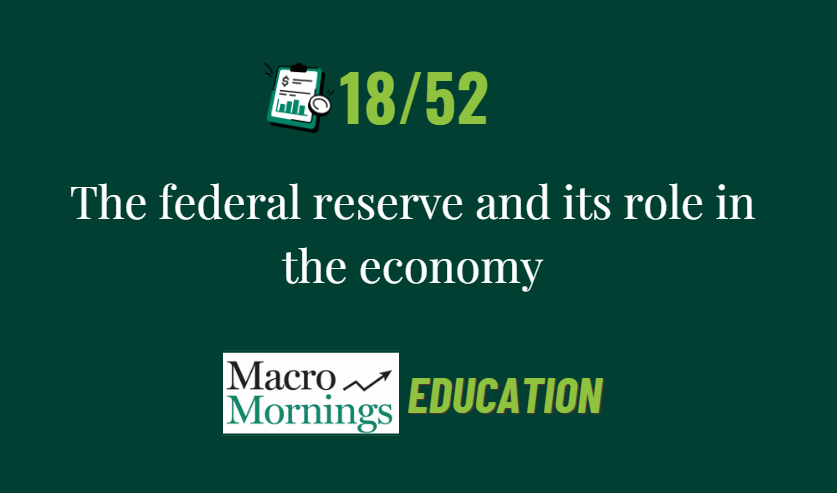💡 New on Macro Mornings? Start here
👨🎓 This is part of a 52-week series on macroeconomics designed to build your knowledge step by step. Feel free to catch up on previous emails here if you'd like to start from the beginning!
Dear all,
In our previous email, we discussed Quantitative Easing (QE) and its impact on the economy. Today, let’s take a closer look at the institution that often implements such policies in the United States - the Federal Reserve - and how its actions influence the broader economy and global markets.
The Federal Reserve (often referred to as “the Fed”) is the central bank of the United States. It was established in 1913 to provide the country with a safer, more flexible, and more stable monetary and financial system. The Fed has several key functions that make it one of the most powerful economic institutions in the world:
Conducting Monetary Policy
The Fed’s primary responsibility is to conduct monetary policy to achieve its dual mandate: maximum employment and…
Keep reading with a 7-day free trial
Subscribe to Macro Mornings 💡 to keep reading this post and get 7 days of free access to the full post archives.




